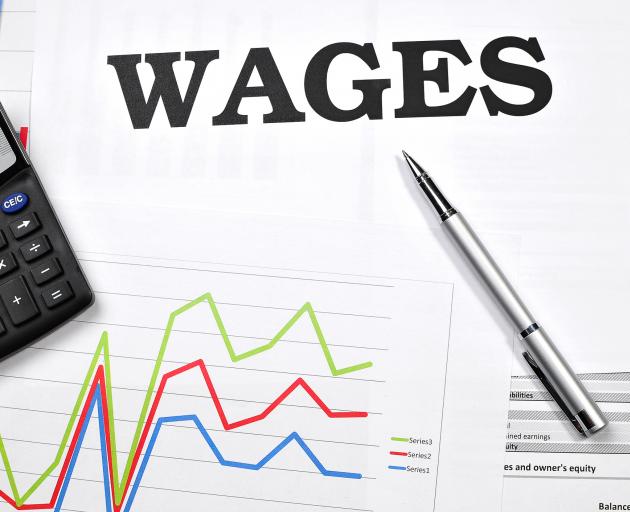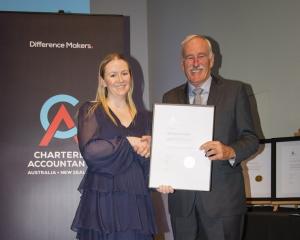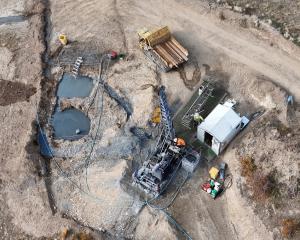
ASB senior economist Mark Smith says the proposed imposition of industry-wide Fair Pay Agreements by the Government, and the move towards collective bargaining, is likely to add to wage and consumer price inflation at the margin. Business editor Dene Mackenzie reports.
The labour market looks stretched, according to capacity measures, but inflation has remained low for the current stage of the economic cycle.
Inflation is expected to have risen to 1.7% in the June quarter when figures are released tomorrow.
ASB senior economist Mark Smith said there had been limited flow through to the wider labour market from the July 2017 increases in the minimum wage and the April 2017 pay equity settlements for care and support workers.
Annual Labour Cost Index inflation for all sectors, excluding the impact of the healthcare worker settlement, was a mild 1.6% in the March 2018 year.
Median increases remained relatively mild. March 2018 data confirmed only 34% of salary and wage rates increased more than 2% in the past 12 months. Only 18% achieved more than 3%.
About 49% of salaries and wages showed no annual increases and the remaining 17% showed annual increases of 2% or less.
Persistently weak inflationary pressure had raised the issue of whether the Phillips curve - the relationship between labour market slack and inflation - had fundamentally changed following the global financial crisis, Mr Smith said.
"This is analogous to the apparent puzzle of why consumer price inflation has stayed so low, both here and abroad, despite strong growth in the global economy."
The weak labour earnings growth was unusual of low unemployment rates. But there were several factors helping to explain the wage moderation.
They included a slowdown in labour productivity growth. Productivity would largely influence how much revenue businesses generated and how much they could pay employees long term, Mr Smith said.
There could be more labour-market slack than headline measures suggested. In some countries, underemployment rates, where people were employed but would prefer to work more hours, had not fallen by as much as the unemployment rate. The New Zealand underemployment rate had fallen lately but was still around historical averages.
A more digital and integrated global economy had changed the nature of employment, he said.
"This may mean labour market slack spills over between economies. In addition, technology, through greater automation, is adding to the range of competitive forces that may be weighing on overall wage growth."
Low consumer price inflation was also a factor. Some wages were indexed to CPI movements.
Statistics New Zealand figures for 2017 suggested about 3% of employees and slightly less than 3% of paid hours were on or below the minimum wage at the time, accounting for less than 2% of total hourly earnings.
There were also many employees earning just above the minimum wage, Mr Smith said.
Lower-paid jobs tended to be more concentrated in the younger working-age population. Median hourly earnings for workers aged 15 to 19 were just 2% above the minimum wage.
Median hourly earnings tended to be highest for workers in the 35 to 55 age brackets.
Median wages tended to be lower in the retail and arts/recreation sector, where a larger portion of younger workers were on the minimum wage. Higher-paid jobs tended to be in the smaller financial and insurance, utilities and mining sectors.
The minimum wage was set to increase an average of 6% through to 2021. Assuming the proportion of workers on the minimum wage stayed at 3% during the next few years, the direct contribution of the increase in the minimum wage would add 0.2% to annual wage inflation, about double that of the previous decade.
"It seems likely the percentage increases in the minimum wage will outpace general wages inflation. A growing portion of workers are likely to find themselves earning the minimum wage. This will increase the impact of the higher rising minimum wage on overall wage inflation."
Various impact scenarios suggested about 4% to 8% of hours worked would be at the minimum wage by 2021. Five percent to 11% of employees were expected to be on the minimum wage by 2021, Mr Smith said.
As employees earning just below the minimum wage sought to preserve wage relativity, increases in the minimum wage would probably have an impact on other wages.
The impact was expected to be stronger on wages just above the minimum wage. Estimates from the Household Labour Force Survey suggested about 18% of employees and 17% of hours worked were on wages 5% to 25% above the minimum wage at that time.
ASB had assumed a staggered wage increase of between 3.5% and 5% a year across those wage brackets, he said.
"All up, we expect overall annual wage inflation from the labour cost index to peak at just below 3% by the end of the decade, equivalent to a 4% increase in weekly hourly earnings.
The Fair Pay Agreements (FPAs) would probably set minimum standards and conditions for employment for all employees in an industry or sector, without the need for individual agreements.
Arguably, it was a step towards the Modern Award system in place in Australia.
Initial views on the FPAs were mixed. On the plus side, FPAs would help lift wages and conditions and ensure good employers were not disadvantaged by paying reasonable, industry-standard wages, Mr Smith said.
Last year's $2 billion care and support workers' settlement was similar to an FPA and it had huge public support.
However, there was concern the move away from individual agreements would restrict flexibility for employers and workers, possibly resulting in some job losses - further aggravating labour market capacity pressures and potentially weighing on labour productivity.
"It seems more likely the FPAs will result in higher wage increases in the lower-paid sectors, some of which has already been incorporated by the signalled increase in the minimum wage."
Wages were a key input into the pricing decisions of firms. The labour share of incomes was about two-thirds at present.
Unless the increase in the wage bill was offset by increasing labour productivity, the changes would probably see the labour share of income increase, he said.
Taking the Treasury and overseas estimates as a guide, ASB estimates suggested hours worked within the economy could be 1% lower by mid-2021 as a result of the higher minimum wage and FPAs.
"Our gut feeling is the actual impact on employment is likely to be at the modest end of the scale and is unlikely to jeopardise the Reserve Bank's employment objectives."
Within the context of the 23% increase observed in the Household Labour Force Survey hours worked since 2010, the change looked minor.
Lifts in the minimum wage would still present challenges for some firms highly reliant on low-paid labour. For them, as well as the wider economy grappling with capacity constraints, boosting labour productivity remained the goal to boosting living standards in New Zealand, Mr Smith said.












